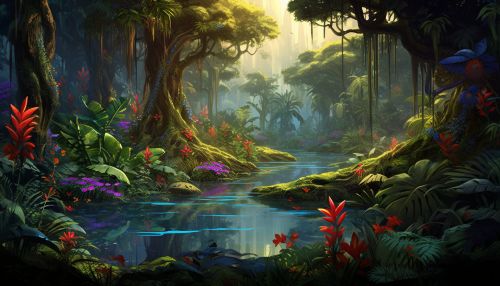Biodiversity hotspots
Introduction
Biodiversity hotspots are geographical areas that contain high numbers of endemic species. These regions are under significant threat from human activities, leading to a loss of biodiversity. Conservation International, a non-profit environmental organization, has identified 36 biodiversity hotspots worldwide. These hotspots cover just 2.4% of the Earth's land surface, yet they account for more than half of the world's plant species as endemics and nearly 43% of bird, mammal, reptile, and amphibian species as endemics.


Identification of Biodiversity Hotspots
The concept of biodiversity hotspots was first proposed by British ecologist Norman Myers in 1988. Myers identified ten tropical forests—areas where the most significant losses of habitats were occurring—as the initial hotspots. These included the tropical rainforests of the Amazon, the Atlantic Forest of Brazil, and the forests of Madagascar.
The identification of biodiversity hotspots is based on two criteria: endemism and degree of threat. A region must contain at least 1,500 vascular plants as endemics to qualify as a hotspot. In addition, it must have lost at least 70% of its original habitat. The application of these criteria has resulted in the recognition of 36 biodiversity hotspots.
Importance of Biodiversity Hotspots
Biodiversity hotspots are of immense importance for several reasons. They are treasure troves of the planet's biological diversity, hosting a disproportionately high number of species. Many of these species are found nowhere else in the world, making their conservation critical.
Hotspots also provide essential ecosystem services, such as water purification, climate regulation, and pollination. These services are vital for human survival and well-being. Furthermore, hotspots are important for the development of new drugs and treatments, as they are home to a vast array of plant species with medicinal properties.
Threats to Biodiversity Hotspots
Biodiversity hotspots face numerous threats, primarily from human activities. These include deforestation, habitat fragmentation, overexploitation of resources, climate change, and invasive species. These threats lead to habitat loss, the primary cause of biodiversity loss in hotspots.
Deforestation for agriculture, logging, and mining is a major threat to many hotspots. It not only destroys habitats but also fragments them, making it difficult for species to move and adapt to environmental changes. Overexploitation of resources, such as overfishing and hunting, can lead to the extinction of species. Climate change is also a significant threat, as it can alter the conditions of habitats, making them unsuitable for many species. Invasive species can outcompete native species for resources, leading to their decline or extinction.
Conservation of Biodiversity Hotspots
Conservation efforts in biodiversity hotspots are crucial to prevent further loss of biodiversity. These efforts include establishing protected areas, promoting sustainable land use practices, and implementing conservation programs for threatened species.
Protected areas, such as national parks and wildlife reserves, can safeguard habitats and provide refuge for species. Sustainable land use practices, such as agroforestry and community-based conservation, can help balance the needs of people and wildlife. Conservation programs for threatened species can involve captive breeding, habitat restoration, and reintroduction programs.
Despite these efforts, conservation in biodiversity hotspots faces several challenges. These include lack of funding, conflicting interests between conservation and development, and inadequate enforcement of conservation laws.
